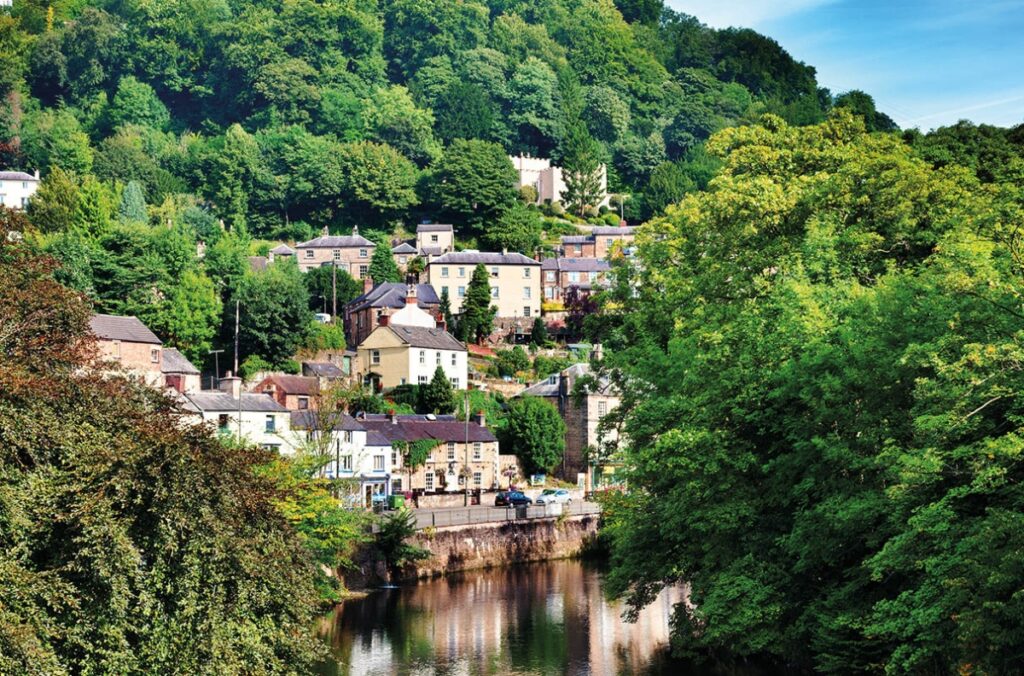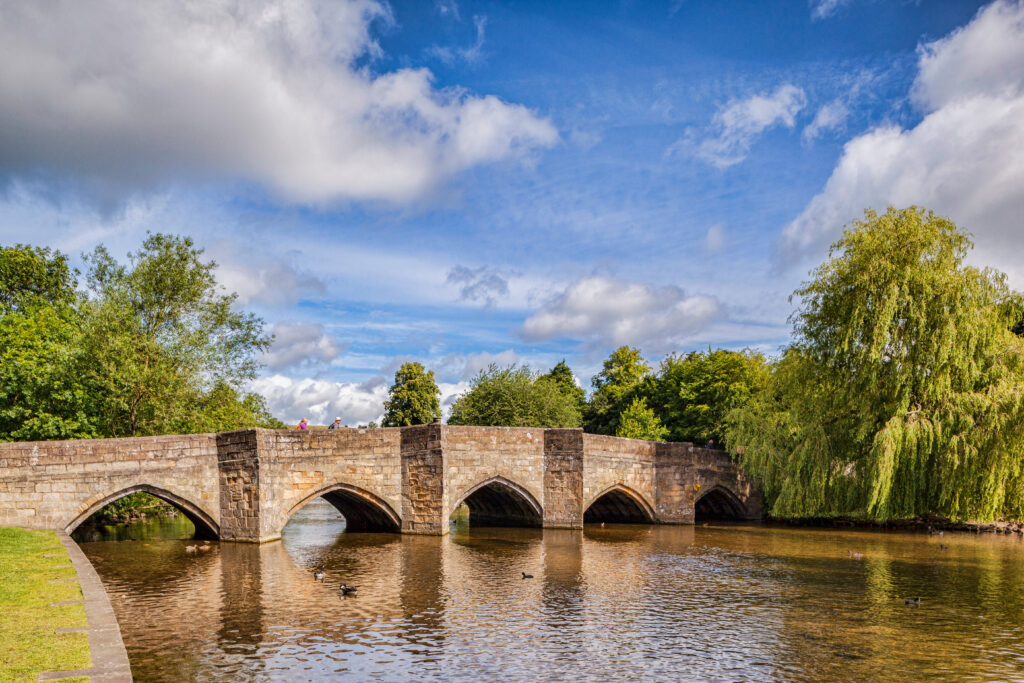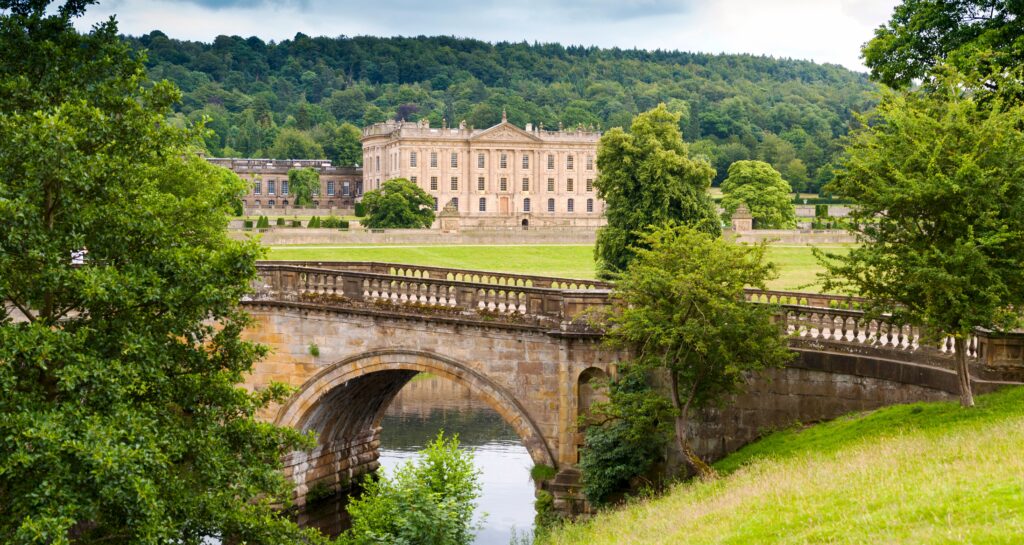History of Matlock and Matlock Bath

The modern town of Matlock, a place where the scenic valley is divided by the River Derwent into a place of many parts. With a total of five parts making up Matlock; Matlock Town, Matlock Green, Matlock Bank, Matlock Bridge and Matlock Bath.
Recorded in the Domesday Book of 1085, at the time of the Norman Conquest there were just two settlements here Matlock and Matlock Bridge. Since then, Matlock has transformed and grown due to the coming of the railways in 1849.
Matlock Bath

Matlock Bath was soon to be discovered by the Romans who mined and used the warm thermal springs, however it wasn’t until the 17th century that the warm springs because known and used for medicinal purposes allowing Matlock Bath to become a popular spa town.
Matlock Bath was a noted water-cure resort but only really blossomed into a tourist attraction after the railways were created. The railways transformed Matlock from a small hamlet whose residents where mainly in farming, quarrying, and mining, into a thriving tourist spot, with many seeking the water cure throughout the Victorian era.
Matlock Bank is the steep hillside east of River Derwent, rising from Crown Square into the centre of town, climbing up Smedley Street, and beyond. This was once the site of the steepest tramway in the world where the famous ‘Tuppence Up, Penny Down’ tram ran from Crown Square to top of Rutland Street, from 1893 to 1927, a tourist attraction renowned for brining in many a passer by.
John Smedley and Riber Castle
John Smedley came to Matlock in the 19th Century when he capitalised on the special healing springs that rose up within in by building a Hydro Cure Centre, the largest of the Century. His Hydro was world famous with celebrities, statesmen, and even royalty coming to seek treatment.
Due to his success Smedley decided to stay so had Riber Castle built as his residence. The castle stands 800 feet above the town of Matlock on the crown of Riber Hill, constructed in 1868 this looming skeletal ruin is still well preserved with its four-square turrets and battlements, a familiar landmark to be seen for miles around.
Hydrotherapy had its heyday in the 1890s, with 20 plus Hydro Centres in the Matlock and Matlock Bath area at this time, such as Chatsworth, Rockside, Lilybank, Clarence House and of course Smedley’s.
While it would be truly amazing to still be able to use the original Hydro Cure Centres, the First World War was a turning point in the fortunes of Hydro and the centres now dotted around the Peak District. With the Depression that came after WW1 it had a dramatic impact on the industry. It took the Second World War to finally end the industry completely.
Now not in use, Smedley’s Hydro was used for a School of Military Intelligence by the army, and eventually the building was taken over by the Derbyshire County Council and is still used as their County Hall to this day.

Matlock and Matlock Bridge
The original settlement of Matlock was built around the area of the parish church high on the east bank of the Derwent. Matlock Bridge was a major crossing point and meeting place where three roads culminated and was eventually developed as a settlement in the 18th and 19th centuries.
From Matlock Bridge, Dale Road runs towards Cromford, passing through a picturesque place with High Tor, the highest sheer cliff face in Britain, rising above the river and the wooded hillside of Masson opposite. Castellated mansions and Swiss-style chalets are dotted throughout the woodland. Down below, the contrasting promenade full of holiday attractions, restaurants, hotels, cafes, arcades and pubs now line the roadside showing the humongous transformation Matlock has had.
Lumsdale Valley

Further down, Lumsdale Valley watermills and residence used to be a bustling hive of activity powered by the ever-flowing waters of Bentley Brook. Unfortunately, now left to ruin with nature engulfing its remaining buildings and mills, as the town moved from working town to tourist town. There are magical walks through Lumsdale Valley though it's asked that you respect the delicate nature of the area.
Heights of Abraham
Whilst in the area, nearby at The Heights of Abraham you can take a cable car right to the top where there are stunning views of the surrounding valleys and woodlands, from here there a views for miles around of Matlock. The Great Masson Cavern nestles into the hill side. With guided tours you can experience first-hand the cavern system that winds underground, with state of the art light installations your guide will take you through a fascinating journey. From the light of a single candle to a chamber flooded with colour you can learn of the caverns 350-million-year history.
In just a 12-mile radius you can also visit the dramatic Chatsworth House and Garden, this 1600 stately home welcomes all to enjoy the history and heritage that lies between its walls and grounds. It is a must see whilst you are in the area. Stop off at The Devonshire Arms at Beeley or The Devonshire Arms at Pilsley for a light bite of lunch, or a refreshing drink before you continue with your adventures.
There are certainly few rural places in Britain that have so much to offer in such a small area. Visit out Things To Do In Matlock page to find our top experiences in Matlock.

If you are planning a visit to the Peak District, and are looking for somewhere to stay? Well we have a number of Hotels, Inns and Holiday Cottages in the Derbyshire area that are perfect for a countryside break. View our collection here.